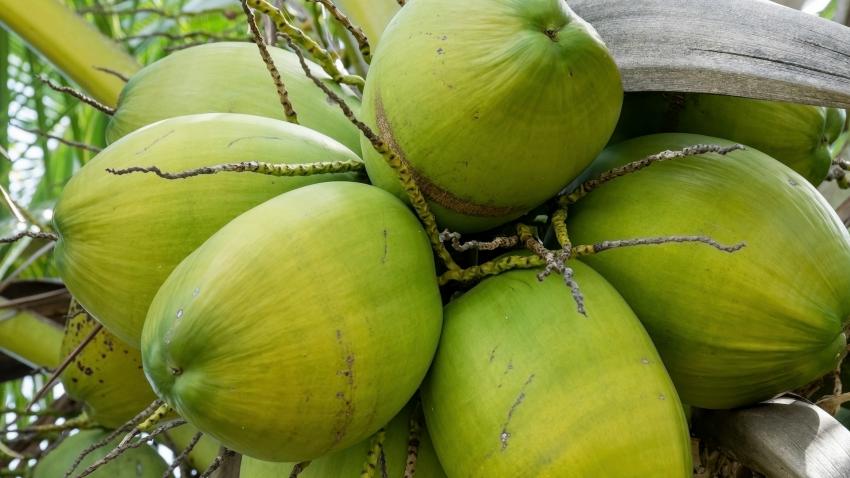You are here
Back to topFresh Vietnamese Coconuts Granted China Market Access

On Aug. 22, the General Administration of Customs of China announced via its website that fresh coconuts from Vietnam meeting the stipulated phytosanitary requirements would be permissible for import into China.
Vietnamese coconuts are primarily grown in the central coastal provinces and the Mekong Delta region, with a cultivation area of nearly 200,000 hectares and an annual production of about 2 million metric tons, ranking seventh in the world. Vietnam exports coconuts to 90 countries and regions, with major markets including Europe, the Americas, the Middle East, Japan and South Korea. In 2023, the total export value of Vietnam’s fresh coconuts and related products reached $243 million.
According to the GACC announcement, the types of fresh Vietnamese coconuts permitted for import include green coconuts with a stem length not exceeding five centimeters and peeled coconuts. China has identified a total of 16 quarantine pests of concern related to fresh coconuts from Vietnam, namely, the spiraling whitefly (Aleurodicus dispersus), white mango scale (Aulacaspis tubercularis), coconut hispine beetle (Brontispa longissima), rubber termite (Coptotermes curvignathus), mealybug Dysmicoccus lepelleyi, gray pineapple mealybug (Dysmicoccus neobrevipes), mango shield scale (Milviscutulus mangiferae), coconut black-headed caterpillar (Opisina arenosella), palm mealybug (Palmicultor palmarum), coffee mealybug (Planococcus lilacinus), red palm weevil (Rhynchophorus ferrugineus), stellate scale (Vinsonia stellifera), diplodia pod rot of cocoa (Lasiodiplodia theobromae), white root disease of rubber (Rigidoporus microporus), devil weed (Chromolaena odorata) and bitter vine (Mikania micrantha).
Orchards intending to export fresh coconuts to China must establish a traceability system and adhere to good agricultural practices and integrated pest management techniques. During the packing process, fresh coconuts destined for China must undergo procedures including the removal of diseased or deformed fruits, sorting, grading, and cleaning to ensure the absence of insects, mites, rotten fruits, branches, leaves, roots and soil. Additionally, these fresh coconuts must enter China through ports approved for fruit imports by Chinese authorities.
Image: Pixabay
This article was translated from Chinese. Read the original article.















Add new comment